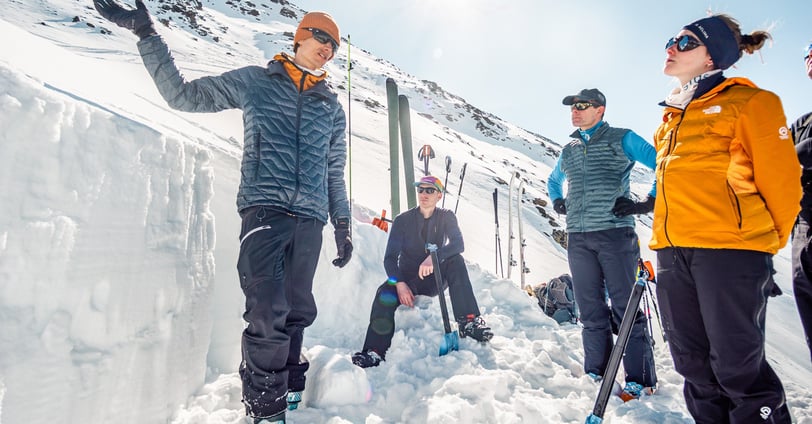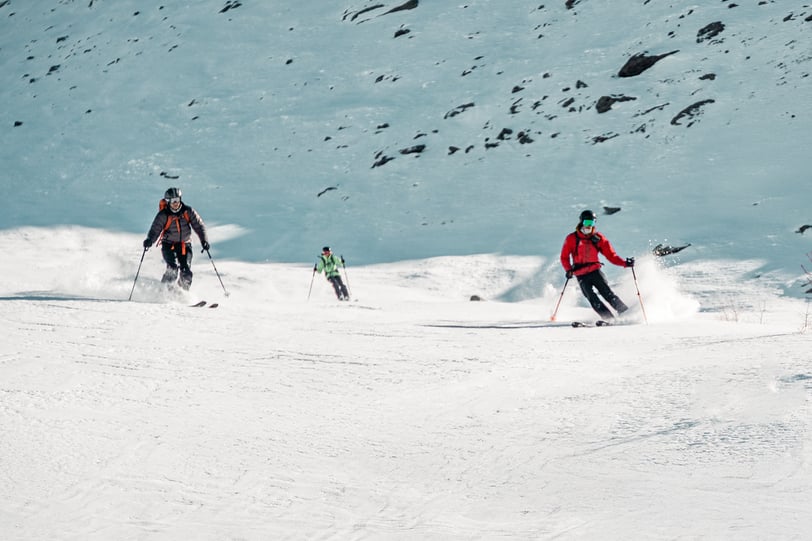Risk Management in Motion: Lessons from the Mountains
What can financial, cyber, or compliance professionals learn from mountain guides? More than you might think. Behind every summit reached lies a structured process of observation, assessment, and deliberate decision-making—designed to manage dynamic risk under pressure. This mindset applies just as much in boardrooms as it does on ridges. Discover how structured thinking, emotional awareness, and continuous learning make the difference between reactive choices and sound leadership in uncertainty.
Jef Verstraeten
5/15/20254 min read


Risk Management in Motion: Lessons from the Mountains
(Originally written for an internal newsletter for a large Belgian bank, published in april 2025)
To the casual observer, mountaineering might seem reckless - a world of thrill-seeking individuals chasing peaks in dangerous terrain. But behind this image lies a profession based on discipline, preparation and structure. In fact, mountain guides work with a mindset and methodology that reflects the best practices in risk management. For professionals managing financial, cyber or compliance risk, their approach offers valuable insights. At the heart of mountain guiding is not the adventure -it’s the responsibility. Mountain guides have the task of leading their clients safely through unpredictable and often hostile environments. This begins long before anyone sets foot outside. It starts with preparation: understanding the group’s physical condition, assessing the weather and terrain, and planning multiple route scenarios. In this initial phase, the risk is observed for the first time.
A structured decision model: observe – assess – decide
In environments where the stakes are high - be it on a mountain ridge or in a boardroom - our brains are programmed to react quickly. In high-stakes environments - whether on a mountain ridge or in a boardroom - our brains are wired/programmed to react quickly. Psychologist Daniel Kahneman calls this system 1 thinking: fast, intuitive and emotionally driven. This is what pushes a skier to an untouched powder face/patch of powder snow, or a manager toward a risky investment that promises quick gains/profits.
The key to good decision-making under pressure is to interrupt this impulse. Mountain guides do this by applying a three-phase process:
Observe: First, they perceive without reacting. A change in the wind. A client’s slight fatigue. Slight changes in the snowpack/snow cover. These are all early indicators that something could change.
Assess: Next, they evaluate these observations. Are the new signals consistent with the forecast? Do the facts support or contradict their intuition? Are the group dynamics beginning to unravel? Which options are available, and what are their pros and cons? This is where instinct is compared with reality.
Decide: The guide will only take action, once the situation has been fully assessed. Which approach makes the most sense: turn back, continue, or change the route? The decision is made at the end—not the beginning—of the process.
This method deliberately slows down the decision-making cycle, allowing the more analytical and reflective system 2 thinking to take over—where reasoning, experience and data can guide action instead of impulse. Splitting the process into different phases helps the mind remain open and alert, reduces the risk of subconscious bias, and ensures that perception, analysis and decision-making are not coincide in a single reactive moment.
Risk Is Dynamic
In the mountains, risk is never static. Conditions change rapidly. Human factors evolve—fatigue sets in, confidence rises or falters, communication becomes strained. A plan that felt safe in the morning can become dangerous by the afternoon. That’s why mountain guides continuously reassess both the environment and the team, remaining in a constant state of perception, even while in action.
To manage this dynamic landscape, certain evaluation and decision points are pre-set during the planning phase. These serve as structured moments to pause, evaluate and either confirm or adapt the plan. Between these moments, the plan remains in place—unless critical data emerges that requires immediate reassessment. An alarm signal, such as “shooting cracks” in the snow pack, for instance, may override the original schedule and force an unplanned evaluation point.
Risk managers operate in similarly dynamic environments. Cyber threats evolve hourly, financial markets shift on emotion as much as fundamentals, and erradic behavior under pressure can change outcomes for the negative. As in the mountains, the key is to stay responsive without becoming reactive. A structured decision-making framework that includes both routine assessments and clear protocols for emergency responsesbrings clarity and confidence. It enables teams to respond to new information with agility and precision, without panicking or making assumptions.
People Are Part of the Equation
Managing risk isn’t just about executing systems. It’s also about reading people. It requires emotionally intelligent leadership. Mountain guides should constantly monitor stress levels, energy and group dynamics. Emotional states such as fear, overconfidence or fatigue can be just as dangerous as falling rocks.
Risk managers must react to psychological pressures in a similar way: fear of failure, demands from shareholders or senior management, and resistance to inconvenient truths. Sound decision-making under pressure depends not only on technical knowledge, but also on emotional awareness and the ability to lead calmly through uncertainty.
Debriefing and Learning
Every mountain tour ends with a reflection: What went well? What surprised us? What should we do differently next time? This habit of reflecting and learning is essential, not just for safety, but also for improving decision-making over time. It creates a solid foundation for recognising and responding to incidents before accidents happen. Risk professionals should adopt the same mindset. Incidents, near misses, or unexpected outcomes must be investigated -not with blame, but with curiosity. Learning from risk isn’t just how resilient organizations are built, it’s how we’ve always learned.
Conclusion: Same Logic, Different Terrain
Whether you’re on a glacier or managing operational exposure, the logic is the same:
Notice early. Assess clearly. Decide deliberately.
In both worlds, effective risk management doesn’t rely on reacting quickly—but on thinking clearly. Our minds are wired to learn from mistakes, but this requires structure and willingness to challenge assumptions—especially in environments where risks have precarious consequences. That’s what mountain guides practice daily - and it’s what risk managers can apply in their own environments.



